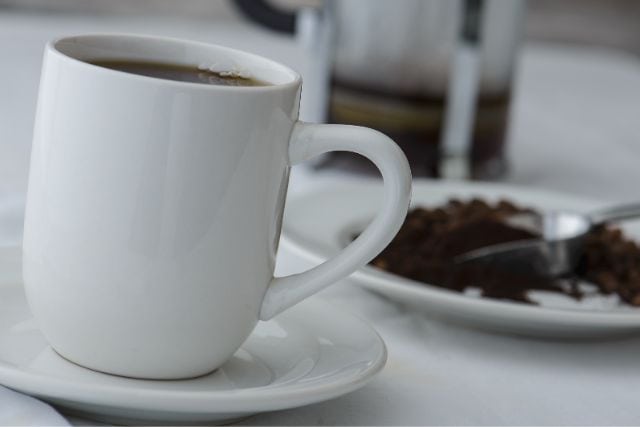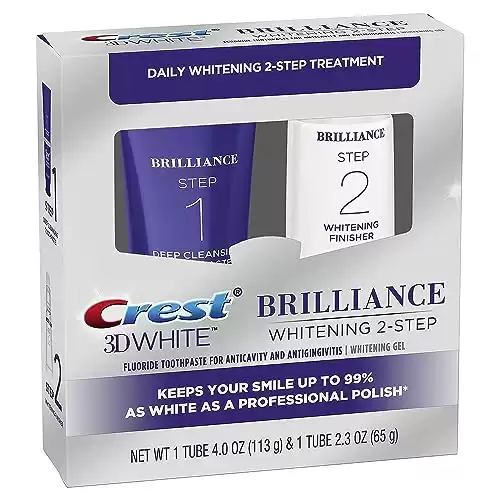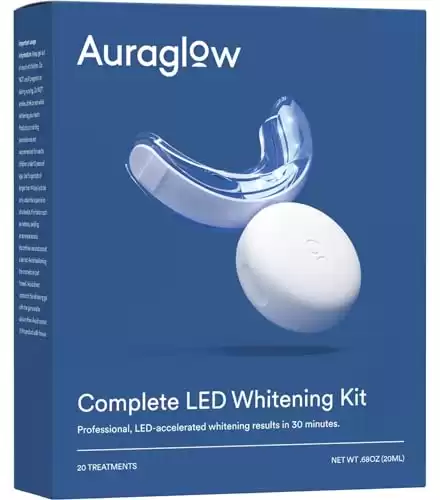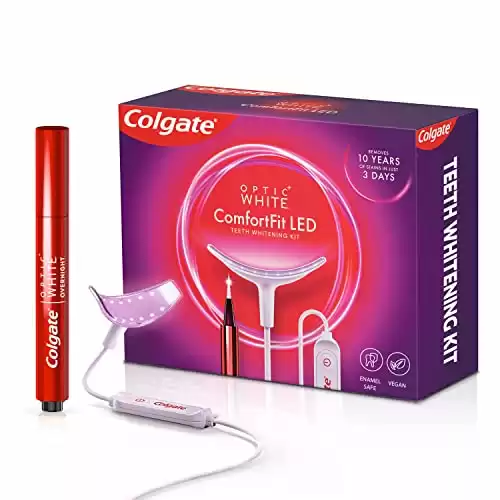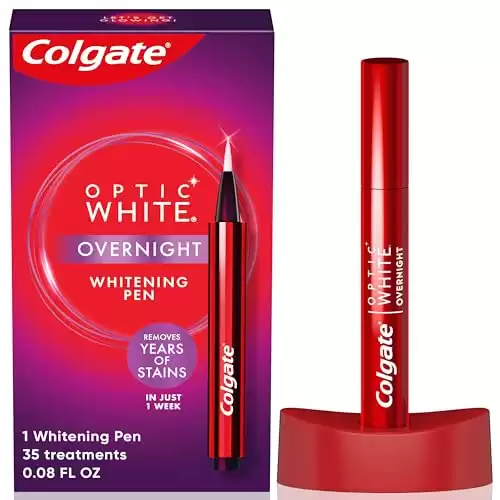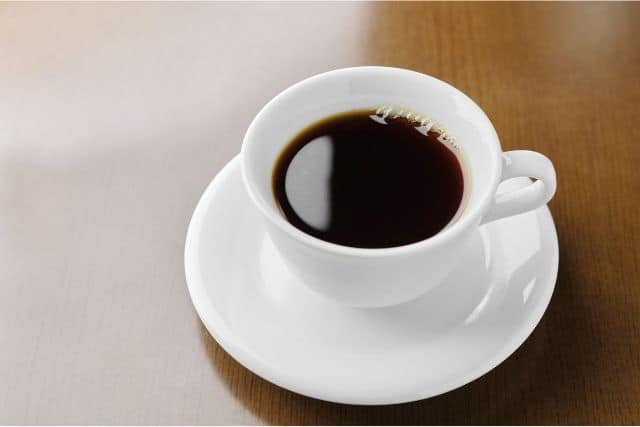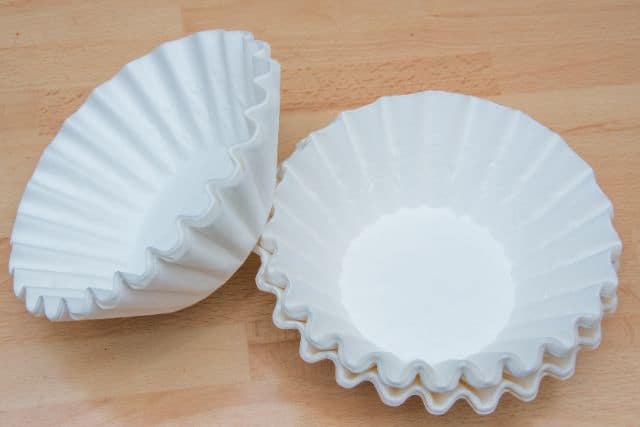You Know Coffee Stains Teeth – Now You Can Prevent Them With These 10 Simple Tips
This post contains affiliate links, which means we receive a small commission on qualifying purchases. This does not impact your cost in any way. See details here.

Are you a coffee lover who cringes at the thought of stained teeth?
You’re not alone.
Many people enjoy their daily cup of joe but worry about the effects of coffee stains on their pearly whites.
In this article, we’ll explore why coffee stains teeth and the potential effects on your dental health.
But don’t worry, we won’t leave you hanging – we’ll also share 10 simple and effective tips to prevent coffee stains on your teeth.
Plus, we’ll take a look at some other drinks that can also leave your smile looking less than radiant. So, grab your favorite mug and let’s dive in!
Why Coffee Stains Teeth
Coffee is known for its rich and dark pigmentation as a result of natural compounds called tannins, which can easily bind to the enamel of the teeth, leading to discoloration and stains.
Tannins, which are a type of polyphenol found in coffee, have the ability to adhere to the porous surface of tooth enamel, creating visible stains over time. These compounds have an affinity for proteins and can easily penetrate the enamel, causing extrinsic discoloration that is often difficult to remove through regular brushing alone.
The acidic nature of coffee can contribute to the erosion of tooth enamel, making it more susceptible to staining from tannins and other pigmented compounds present in the beverage. This susceptibility may vary among individuals based on the natural composition and strength of their enamel.
What Are The Effects Of Coffee Stains On Teeth?
The effects of coffee stains on teeth can include discoloration, the formation of plaque, and potential impacts on oral hygiene, often requiring intervention from a dentist.
When coffee stains accumulate on the teeth, they can lead to visible discoloration, making the teeth appear yellow or brownish. The porous nature of the teeth makes them susceptible to absorbing the pigments from coffee, resulting in stubborn stains that regular brushing may not remove.
The presence of coffee stains can contribute to the buildup of plaque, which not only affects the aesthetic appearance of the teeth but also poses risks to oral health. Untreated coffee stains may progress to more severe dental issues, including the erosion of tooth enamel, heightened sensitivity, and an increased susceptibility to cavities and gum disease.
As such, it is crucial for individuals to seek professional dental care to address these concerns. Dental professionals can provide thorough cleaning procedures, such as professional whitening or scaling, to effectively remove coffee stains and restore the natural appearance of the teeth, promoting optimal oral hygiene and overall dental wellness.
How Can You Prevent Coffee Stains On Teeth?
Preventing coffee stains on teeth involves adopting proactive measures such as drinking water, using an electric toothbrush, and incorporating mouthwash into your oral hygiene routine.
Ensuring adequate water intake throughout the day not only hydrates the body but also helps in preventing coffee stains as it washes away the pigments that may potentially adhere to the teeth.
The use of an electric toothbrush assists in effectively removing surface stains caused by coffee, providing a thorough cleaning. Integrating mouthwash into the oral care routine provides added protection by reaching areas that brushing and flossing may miss, helping to minimize the impact of coffee stains over time.
1. Drink Water After Coffee
Drinking water after consuming coffee helps in rinsing away residual particles and acidity, promoting saliva production, and maintaining oral hygiene to reduce the potential for stains on teeth.
When you drink water after having your cup of coffee, it plays a significant role in reducing acidity in the mouth. This is essential because acidic environments can lead to enamel erosion and dental issues.
The act of rinsing with water helps in promoting saliva production, which is crucial for keeping the mouth hydrated and aiding in the natural self-cleansing process. Saliva contains antibacterial properties that can help in neutralizing acidity and protecting the teeth from staining.
Drinking water helps to rinse away residual coffee particles and can prevent them from sticking to the teeth surface, thus mitigating the potential for staining over time.
2. Use A Straw
Using a straw when consuming coffee can help minimize direct contact between the beverage and the teeth, reducing the likelihood of enamel staining and discoloration.
This simple practice creates a protective barrier, which lessens the exposure of the teeth to the dark pigments and acidic nature of coffee, ultimately minimizing the risk of tooth discoloration.
By sipping through a straw, the coffee bypasses the front surface of the teeth, where staining mostly occurs, thus preserving the natural color and enamel health. It can also contribute to maintaining a brighter and healthier smile over time.
3. Rinse With Mouthwash
In addition to addressing coffee breath, rinsing with an appropriate mouthwash after consuming coffee can help eliminate residual particles and reduce the presence of bacteria, minimizing the potential for stains and maintaining oral hygiene.
Using a mouthwash with antibacterial properties targets any lingering bacteria in the oral cavity, which could contribute to the formation of stains.
The mouthwash effectively reaches areas that may be missed during brushing, providing a comprehensive clean. By reducing the bacterial load, it also helps to maintain a healthy balance in the mouth, contributing to overall oral health and preventing the accumulation of potential staining agents.
This simple addition to the oral care routine can significantly impact the long-term appearance and health of teeth.
4. Brush Your Teeth After Coffee
Brushing your teeth after consuming coffee helps in removing surface stains and preventing discoloration, contributing to overall oral health and reducing the need for frequent dental visits related to coffee stains.
Coffee, while being a delightful beverage, can also leave unsightly stains on the teeth, affecting one’s smile and confidence.
By brushing after consuming coffee, individuals can effectively remove surface stains and prevent the gradual discoloration caused by regular coffee consumption.
This routine act of oral hygiene not only maintains the natural white color of the teeth but also contributes to the overall health of the gums and mouth.
5. Use At-Home Whitening Products
At-home whitening products have emerged as a convenient and effective solution to combat coffee stains on teeth.
A variety of over-the-counter whitening toothpastes and strips are formulated specifically to target discoloration caused by coffee consumption. These products often contain mild abrasives and gentle whitening agents that work to lift surface stains, restoring a more vibrant smile. Incorporating such products into your oral care routine can be a proactive step to counteract the effects of daily coffee indulgence.
Whitening trays equipped with gel or paste offer a more intensive approach.
These trays, customized to fit your teeth, provide a uniform application of the whitening agent, reaching even the crevices where coffee stains may settle. While ensuring proper usage frequency and duration is crucial to prevent tooth sensitivity, at-home whitening products contribute to a comprehensive strategy for maintaining a radiant smile while savoring your favorite cup of coffee.
Always consult with a dental professional before starting any teeth-whitening regimen to ensure the products are suitable for your individual oral health needs.
6. Try Oil Pulling
Incorporating oil pulling into your oral hygiene routine can potentially aid in reducing the impact of coffee stains, promoting dental health, and maintaining a cleaner appearance for your teeth.
Oil pulling, an ancient Ayurvedic practice, involves swishing coconut oil or other oils in the mouth to extract toxins and bacteria. This offers potential benefits beyond just traditional brushing and flossing. The antimicrobial properties of the oil can help in removing surface stains, such as those caused by coffee, preventing their deeper penetration into the tooth enamel.
Oil pulling may contribute to improving gum health and reducing plaque formation, thereby supporting overall oral hygiene. In essence, by integrating oil pulling into your daily routine, you may experience not only a brighter smile but also enhanced dental well-being.
7. Limit Your Coffee Intake
Limiting your coffee intake can help minimize the potential for stains on teeth and reduce the impact on gum health, contributing to better oral hygiene and a reduced risk of discoloration.
Excessive coffee consumption can lead to the buildup of stains on the enamel of the teeth, causing discoloration over time.
By reducing the intake of coffee, individuals can also lower their risk of developing gum diseases such as gingivitis, as coffee can contribute to bacterial growth in the mouth. This, in turn, promotes overall gum health and lowers the likelihood of chronic oral health issues.
8. Use Baking Soda
Utilizing baking soda as a natural teeth-cleaning agent can help in reducing and preventing coffee stains on enamel, contributing to a brighter and cleaner appearance for teeth.
When baking soda is used as an abrasive agent, it effectively eliminates surface stains caused by coffee consumption, resulting in a visibly whiter smile. Its gentle abrasive nature can gently polish away stains without causing damage to the enamel, making it an ideal and cost-effective solution for maintaining dental hygiene.
In addition, the alkaline properties of baking soda aid in neutralizing acidic compounds present in coffee, thus reducing the potential for staining. Regular use of baking soda can aid in preventing the buildup of new stains, promoting a sustained bright and clean appearance for your teeth over time.
9. Get Professional Teeth Whitening
Seeking professional teeth whitening services from a dentist can effectively address coffee stains and discoloration, providing a comprehensive solution to enhance the brightness of your smile.
Through the use of advanced whitening techniques, professional dental services can effectively lift and remove stubborn stains caused by coffee consumption, restoring the natural radiance of your teeth.
By opting for professional whitening, individuals can enjoy the confidence of a brighter smile, boosting self-esteem and leaving a lasting positive impression. This procedure is tailored to your specific needs, ensuring optimal results and minimizing the risk of enamel damage or sensitivity commonly associated with over-the-counter whitening products.
10. Avoid Adding Sugar
Avoiding the addition of sugar to your coffee can contribute to better oral hygiene, reduce the potential for stains, and align with a healthier dietary choice, such as incorporating more fruits and vegetables.
When sugar is added to coffee, it creates a breeding ground for bacteria in the mouth, which can lead to dental issues. By opting for sugar-free coffee, you can help maintain a cleaner oral environment.
Reducing sugar intake can minimize the likelihood of developing stains on the teeth, promoting a brighter smile. By choosing to forego sugar in coffee and leaning towards a health-conscious diet with more fruits and vegetables, individuals can bolster their overall well-being.
Incorporating nutrient-rich foods can provide essential vitamins and minerals that support oral health and protect against potential dental concerns.
What Are Some Other Drinks That Can Stain Teeth?
Apart from coffee, various other drinks, including tea, red wine, cola, fruit juices, and sports drinks, can also lead to stains on teeth due to their respective pigmentation and acidity levels.
Tea contains tannins, which can adhere to tooth enamel and cause staining. Red wine’s deep color and acidic nature can also lead to discoloration.
Cola, fruit juices, and sports drinks are high in acidity, which can erode tooth enamel and expose the yellowish dentin beneath. This can contribute to discoloration over time.
Tea
Tea, especially dark and heavily pigmented varieties, can contribute to stains on teeth as a result of its natural compounds and caffeine content, posing similar challenges to coffee in terms of tooth discoloration.
The compounds in tea, such as tannins and polyphenols, are responsible for its staining potential. When these compounds come into contact with the enamel of the teeth, they can create a yellow or brown discoloration over time.
The caffeine in tea can also contribute to this effect, as it can lead to the dehydration of the mouth, which in turn makes the stains more pronounced. While the staining potential of tea is a concern for dental health, there are measures that can be taken to mitigate its impact, such as regular dental hygiene and limiting the consumption of heavily pigmented teas.
Red Wine
The rich pigmentation and acidity in red wine can contribute to stains on teeth, affecting enamel and leading to discoloration similar to the effects of coffee and tea on tooth staining.
Red wine contains various chromogens, which are deeply pigmented molecules that can adhere to the enamel of the teeth, causing stains over time. The acidity in red wine also plays a significant role in enamel discoloration, as it can soften the enamel, making it more susceptible to staining.
This combination of pigmentation and acidity creates an environment conducive to tooth discoloration. When comparing the effects of red wine, coffee, and tea, it becomes evident that they share commonalities in their ability to stain teeth.
The tannins present in red wine, for instance, are similar to those found in coffee and tea, contributing to the staining process. Understanding these similarities can help individuals make informed choices about their consumption and adopt appropriate dental care practices to mitigate the impact of these beverages on their oral health.
Cola
The sugar content and phosphoric acid in cola beverages can contribute to stains on teeth, posing challenges to dental health and enamel discoloration similar to other staining drinks.
High sugar content promotes the growth of harmful bacteria in the mouth, leading to plaque formation and erosion of tooth enamel.
Phosphoric acid in cola can further exacerbate enamel damage by softening it, making it more susceptible to staining.
The combination of sugar and acid in cola poses a dual threat, affecting the appearance of teeth and potentially causing long-term dental issues.
Fruit Juices
Certain fruit juices, especially those high in natural sugars and citric acid, can contribute to stains on teeth, posing challenges to dental health and enamel discoloration similar to other staining beverages.
Fruit juices, such as orange, grape, and cranberry, contain natural sugars that can stick to enamel, leaving it prone to discoloration over time. The presence of citric acid in these juices can also wear away the protective layer of the teeth, increasing the risk of staining and discoloration.
It’s important to keep in mind that the combination of sugars and acids in fruit juices can create an ideal environment for bacteria to thrive, potentially leading to decay and other dental problems. Prolonged exposure to these substances can weaken the enamel, making it more susceptible to discoloration from other sources as well.
Sports Drinks
The artificial colors and acidity in sports drinks can contribute to stains on teeth, posing challenges to dental health and enamel discoloration similar to other staining beverages.
These harmful additives present in sports drinks often lead to erosion of the tooth enamel, making teeth more susceptible to staining and discoloration. The acidity levels in these drinks lower the pH in the mouth, creating an acidic environment that can wear down the protective enamel layer, leaving teeth vulnerable to pigmented compounds.
The artificial colors used in sports drinks can adhere to the weakened enamel, compounding the staining effect. The impact of these additives goes beyond mere cosmetic concerns as they can pave the way for more serious dental issues. Prolonged consumption of sports drinks with these elements heightens the risk of dental caries and enamel erosion, ultimately compromising oral health.
This calls for heightened awareness about the dental implications of such popular beverages, urging individuals to be mindful of their consumption and seek alternatives that promote better dental well-being.

Frequently Asked Questions
How does coffee stain teeth?
Coffee contains tannins and acidic compounds that can penetrate the enamel of your teeth, causing them to appear stained or discolored.
Do coffee stains on teeth only occur from drinking coffee?
No, coffee stains can also occur from consuming other dark-colored beverages such as tea, red wine, and soda, as well as from smoking and poor oral hygiene.
Can using a straw really prevent coffee stains on teeth?
Yes, using a straw can help minimize the contact of coffee with your teeth, reducing the risk of staining. However, it is still important to rinse your mouth with water after drinking coffee to further prevent staining.
How can a whitening treatment help prevent coffee stains on teeth?
Whitening treatments can help remove surface stains and improve the overall appearance of your teeth, making them less prone to coffee stains. It is important to consult with your dentist before using any whitening products.
Are there any long-term consequences of coffee stains on teeth?
Yes, if left untreated, coffee stains can lead to permanent discoloration of your teeth, which can affect your self-confidence and oral health. It is best to take preventive measures to avoid coffee stains on teeth.
